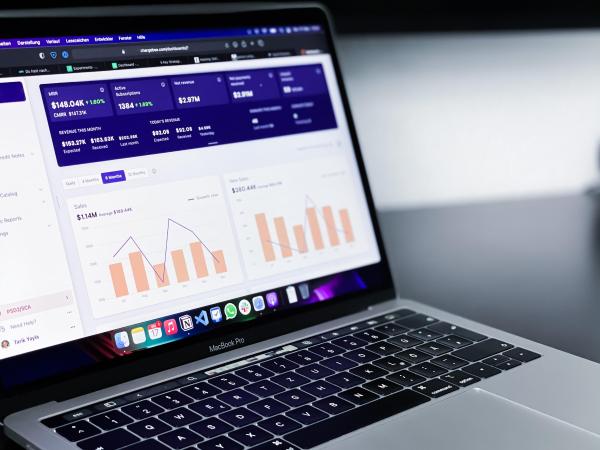Exploring Tech's Influence on Cutting-Edge Annual Reports
In the era of digital transformation, the business landscape has evolved dramatically. This progression is vividly evident in the realm of annual reports, where technology has sculpted a cutting-edge revolution. No longer are annual reports confined to bland, printed documents. Instead, they've morphed into dynamic, interactive digital experiences that powerfully communicate a company's successes, challenges, and aspirations. This transformation has not only redefined how information is presented but also reshaped stakeholder engagement, making transparency and accessibility a new norm in business communications. Let's delve into the ways technology is transforming these critical corporate tools into engaging narratives that capture attention and drive action.
1. The Rise of Interactive Elements
One of the most significant shifts in annual report presentation is the incorporation of interactive elements, a trend pioneered by innovative firms like this annual report design agency. These interactive features, ranging from clickable infographics to embedded videos, make the reports more engaging and easier to digest. They allow readers to navigate the report in a non-linear fashion, exploring areas of interest at their own pace.
Moreover, these elements can provide additional layers of information, presenting data in a more visually appealing and understandable way. Through innovative design solutions from this annual report design agency, companies can present complex financial information or performance data in a more digestible format, making it easier for stakeholders to comprehend. It's a win-win situation: stakeholders receive a more engaging and informative report, while companies can effectively communicate their message.
2. Embracing Digital Platforms
The rise of digital platforms has also played a significant role in transforming annual reports. Moving beyond traditional print formats, companies are now leveraging websites, apps, or digital publications to share their yearly achievements and plans. This transition towards digital platforms offers unparalleled accessibility, enabling stakeholders around the globe to access and interact with the reports at their convenience easily.
Additionally, digital reports offer the ability to incorporate multimedia elements, such as videos, animations, and audio clips, enhancing the report's overall impact and engagement levels. They also present an eco-friendly alternative to printed reports, aligning with corporate social responsibility goals. Overall, digital platforms have transformed the annual report from a static document into a dynamic, interactive experience.
3. Leveraging Social Media
Social media is invaluable for distributing annual reports and reaching a wider audience than ever before. Platforms like LinkedIn, Twitter, and Facebook not only announce the release but also share compelling snippets. Highlighting achievements, key figures, or plans sparks interest and dialogue among stakeholders, encouraging them to delve into the full report.
Social media platforms facilitate easy sharing, expanding the report's reach as users can quickly disseminate information within their networks. Additionally, it enables two-way communication, allowing stakeholders to provide immediate feedback or inquiries. This interactive and expansive communication method enhances stakeholder engagement, transforming annual reports into catalysts for dialogue and connection.
4. The Impact of Virtual Reality
Virtual reality (VR) is the latest technology making its mark on annual reports. Companies now integrate VR elements, offering stakeholders a 360-degree view of operations and performance. This immersive experience enhances understanding and enables users to interact with data in innovative ways.
Moreover, VR enables companies to showcase their facilities, production processes, or products in an engaging and visually appealing way. It creates a sense of connection and involvement for stakeholders beyond just reading numbers. As VR technology advances, its potential for annual reports will keep growing.
5. Data Visualization and Infographics
In today's data-driven world, making complex data understandable and engaging is crucial. Data visualization and infographics are essential tools for this, especially in annual reports. Through visual representations like graphs and charts, companies can present financial data, growth metrics, and other performance indicators in a clear and visually appealing way.
Data visualization tools can transform pages full of numbers into engaging, easy-to-understand visuals that provide insights at a glance. This not only makes the data more accessible to a wider audience but also enhances the overall user experience, facilitating a better understanding of the company's performance and future prospects.
6. The Power of AI and Machine Learning
AI and ML are leading the technological revolution, now even extending to annual reports. These technologies automate data analysis, extracting insights from vast amounts of data in less time than humans. This reduces report preparation time and ensures accurate and insightful data presentation.
AI can create personalized experiences for readers by tailoring content and presentation based on preferences and interactions. This transforms annual reports into unique, user-centric experiences, enhancing engagement and comprehension. As AI and ML advance, their impact on annual reports will continue to revolutionize this essential business tool.
Technology's influence on annual reports is undeniable and ever-evolving. With advancements in interactive elements, digital platforms, social media, VR, data visualization, and AI/ML, the potential for engaging and informative annual reports is limitless. Embracing these technologies enhances stakeholder engagement and positions companies as industry leaders in effective communication. As we move towards a digital future, annual reports will continue to evolve, adapting to technology trends and setting new standards for corporate communications.

